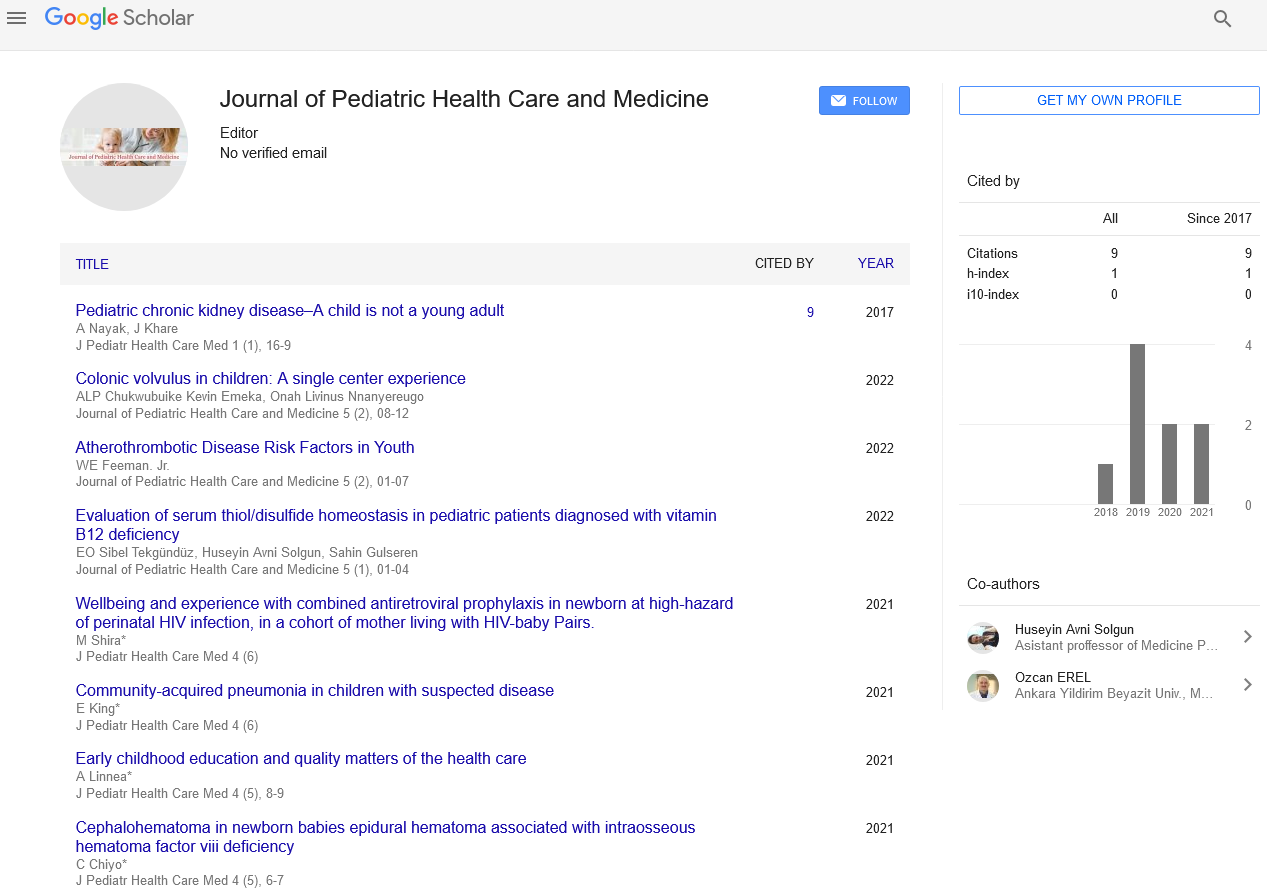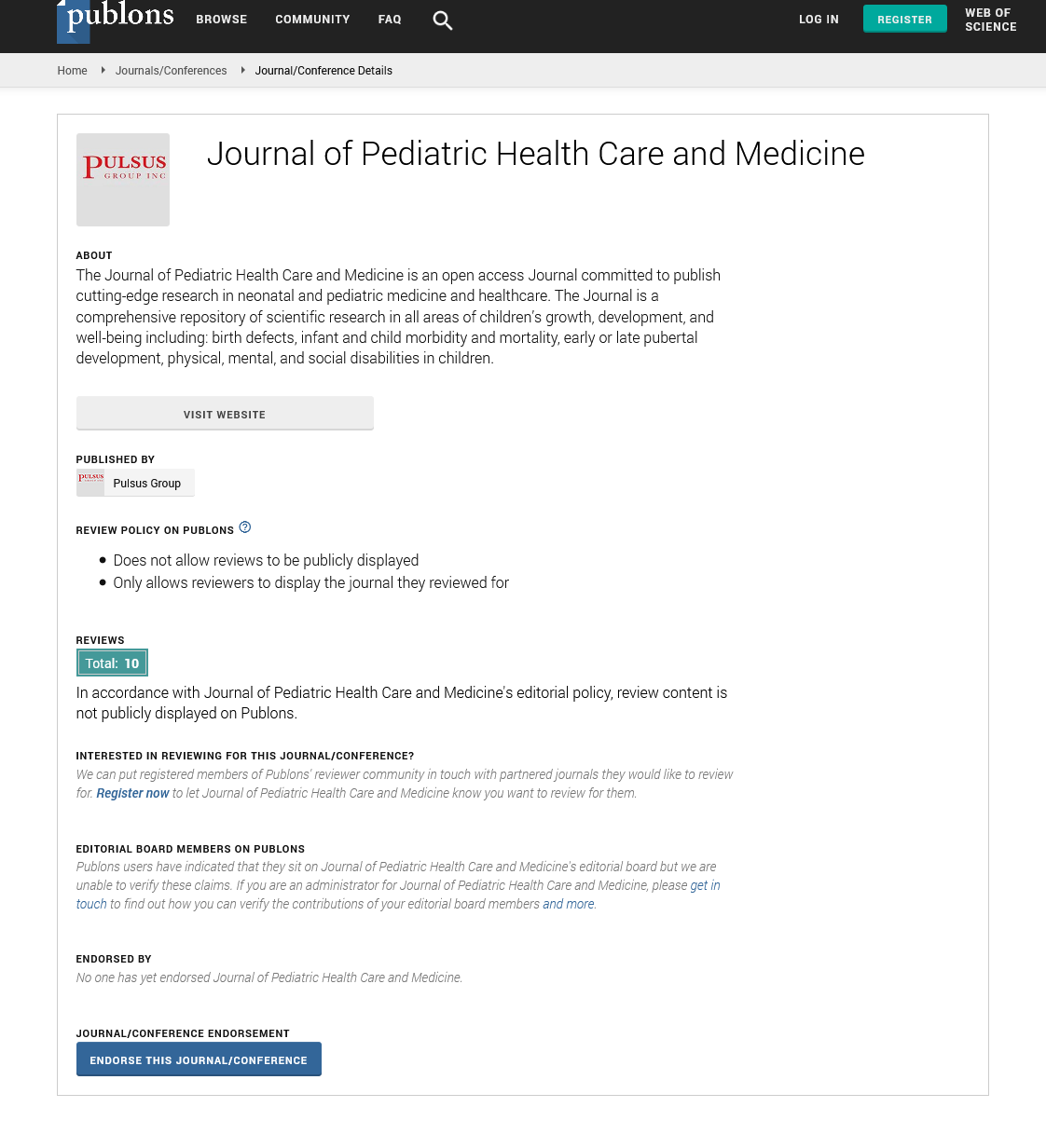Successful and safe daclatasvir drug exposures predicted in children using adult formulations
Received: 30-Nov-2021 Accepted Date: Dec 14, 2021; Published: 21-Dec-2021
Citation: Sudhanshu Singh. Successful and safe daclatasvir drug exposures predicted in children using adult formulations. J Pediatr Health Care Med. 2021; 4(6): 15.
This open-access article is distributed under the terms of the Creative Commons Attribution Non-Commercial License (CC BY-NC) (http://creativecommons.org/licenses/by-nc/4.0/), which permits reuse, distribution and reproduction of the article, provided that the original work is properly cited and the reuse is restricted to noncommercial purposes. For commercial reuse, contact reprints@pulsus.com
Abstract
Sofosbuvir (SOF)/daclatasvir (DCV) is the immediate acting antiviral routine of decision in some low-and center pay nations for healing therapy of persistent hepatitis C infection (HCV) disease in grownups, however information on the utilization of DCV in youngsters are inadequate. We played out a populace pharmacokinetic (PK) examination to foresee DCV openness in youngsters treated with accessible grown-up details.
Keywords
Hepatitis C; Antiviral; Diseases
Introduction
The Hepatitis C infection (HCV) contamination is a significant reason for constant liver sickness and related horribleness and mortality around the world, with an expected 58 million individuals living with ongoing HCV disease. Short-course, oral, therapeutic direct-acting antiviral (DAA) regimens have changed therapy for HCV contamination, however until this point, the worldwide scale up of HCV testing and therapy has zeroed in on grownups, who bear the best weight of dismalness and mortality due to confusions of constant liver illness. There has been significantly less consideration regarding tending to HCV in kids and youths, to a limited extent due to the lower weight of contamination, absence of public arrangements on HCV the board and up to this point, absence of endorsed DAA regimens in children [1].
The 2018 World Health Organization (WHO) rules for HCV care and therapy suggest container genotypic DAA regimens sofosbuvir/daclatasvir (SOF/DCV), glecaprevir/pibrentasvir and SOF/velpatasvir (SOF/VEL) for therapy of all grown-ups with constant HCV disease. After administrative endorsement, proficient society rules from European Association for the Study of the Liver and American Association for the Study of Liver Diseases currently likewise suggest these regimens among teenagers. Deferral of treatment in more youthful kids under 12 years is at present suggested forthcoming endorsement of DAAs for use in this age bunch. In 2019, the utilization of SOF and SOF/ledipasvir was reached out to incorporate kids with hepatitis C 3 years old or more seasoned, and in March 2020, SOF/ VEL routine was endorsed for use in kids 6 years old and more established (or weighing basically 17kg), with no particular security worries in these more youthful age gatherings [2].
Model Development
Appraisals of DCV populace PK boundaries and Monte Carlo reenactments were performed utilizing the nonlinear blended impacts relapse programming nonlinear blended impacts displaying and diagrams created utilizing R-Studio. PK primary and lingering models were surveyed utilizing both measurable and graphical strategies. Dramatic mistake models were utilized to portray interindividual fluctuation (IIV) in PK boundaries [3]. The impact of subject covariates on PK boundaries was tried utilizing the standard stepwise forward consideration and in reverse end model structure method. The last model was assessed utilizing a visual prescient check (VPC) [4].
Conclusion
DCV 30mg OD was anticipated to accomplish successful and safe openings in youngsters 14 to <35 kg, maybe down to 10 kg. These outcomes ought to be approved clinically. Minimal expense accessible grown-up DCV plans along with endorsed pediatric dosages of SOF would extend worldwide admittance to HCV treatment for youngsters. Treatment of HCV contaminated kids ought to be a need with respect to grown-ups. An extensive comprehension of the normal flow of hepatitis C contamination in kids has been hampered by the absence of long haul planned examinations. In view of existing examinations, HCV ordinarily has a gentle course in adolescence. Most kids with persistent HCV disease have a close to ordinary liver histology after at minimum many years of contamination, cirrhosis (counting decompensation) is accounted for in around 12% of constantly tainted kids and young people and hepatocellular carcinoma is uncommon.
REFERENCES
- Indolfi G, Easterbrook P, Dusheiko G, et al. Hepatitis C virus infection in children and adolescents. Lancet Gastroenterol Hepatol. 2019;4:477–487.
- Schmelzer J, Dugan E, Blach S, et al. Global prevalence of hepatitis C virus in children in 2018: a modelling study. Lancet Gastroenterol Hepatol. 2020;5:374–392.
- Goodman ZD, Makhlouf HR, Liu L, et al. Pathology of chronic hepatitis C in children: liver biopsy findings in the Peds-C trial. Hepatology. 2008;47:836–843.
- Murray KF, Balistreri WF, Bansal S, et al. Safety and efficacy of ledipasvir-sofosbuvir with or without ribavirin for chronic hepatitis C in children ages 6-11. Hepatology. 2018;68:2158–2166.






